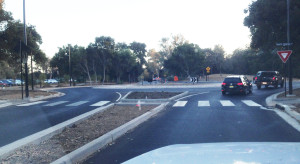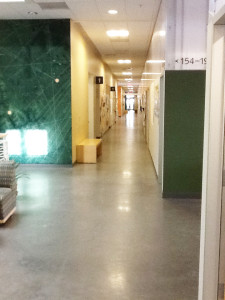How many bad ideas before you find a good one? Learn to prototype.
Saturday, October 10th, 2015In our YCISL workshops, we run the Spaghetti Tower-Marshmallow exercise as a lesson in prototyping with the message of “fail early, fail fast” [it is also used as a lesson in team dynamics]. In order to encourage fast-thinking, teams initially have 5 minutes to brainstorm the design then 15 minutes to build the tower. Usually, all teams fail because they neglect the marshmallow until the last minute and discover that their towers fall over due to the weight of the marshmallow and flexibility of the tower. We then give teams a second (and sometimes third) chance to build the tower – using lessons learned from their previous attempt. What happens in the second round is very interesting – some build shorter towers while others build wider bases and a few will support the marshmallow on multiple sticks of spaghetti instead of one. This exercise really reinforces the idea of making prototypes without investing too much time and resources – this is a lesson from the story of when Tony Fadell showed Steve Jobs some iPod models made from styrofoam [before reading this story in the biography written by Walter Isaacson, I knew of how Jeff Hawkins worked at his kitchen table with models for a PDA – something that would become the Palm Pilot; he would tell this story periodically during my time at Handspring].
So, it would seem the standard for a good innovator would be to be able to go through numerous prototypes to find showstopper failures and work towards a deliverable product.

The traffic circle at Campus Drive and Santa Teresa Street. More un-safe conditions at Stanford.
And you might think that Stanford University, an oft-named place of innovation would have this prototyping process running smoothly. Not so. How could you explain the traffic circle they built where Campus Drive meets Santa Teresa Street? It’s perhaps the third circle they have built on campus: the first is where Panama Mall meets Lasuen Mall (the way people ride their bicycles at Stanford mixed with the heavy student and tourist foot traffic!?) and the second is where Escondido Campus Drive intersects Campus Drive (one of the busiest thoroughfares with pedestrian, bicycle, auto, campus bus, tour bus, delivery trucks and occasionally golf cart traffic). I am guessing the Stanford people got the idea from UC Davis where there are quite a few traffic circles – but it works at UC Davis because it is a bicycle-friendly campus. Wasted resources at Stanford. Accidents waiting to happen. Learn a little about de minimis risk.
Failures can be found all over Stanford. Stanford parking is one huge mistake that can’t seem to be turned around. It keeps getting worse and diminishes Stanford’s workplace appeal. My building, the Y2E2, is also a failed experiment that doesn’t seem to be able to find recourse. Then there’s the time that Stanford went with Oracle – perpetually compounding stress and waste. Oh and that Solar Charging station on Panama Mall that I have never seen anyone use. And if I want to go back to a Stanford-UC Davis comparison, there’s Stanford Marguerite and UC Davis’ Unitrans (one has lots of riders and the other hardly; guess which is which).
OK, to be fair, I can identify a few outstanding Stanford successes. One is the d.School which serves as a beacon for design thinking in both concept and application. Then there’s the CS 106A Programming Methodology Online Course with Mehran Sahami. Coursework also seems to have had a positive track record (thanks Christine); I recently built a pair of online quizzes in Coursework and it was both easy and a tremendous time-saver.
The idea is that success (as a standalone outcome) cannot be mastered. It is the “learn from failure+success” pairing that can and should be mastered. And from mastering this pairing, one can find the intrinsic motivation that we need to become the future generation of innovators.
Add-on: I just started working on scheduling classes for my summer academic program, and I have found the “New Meeting Pattern Grid” to be at new lows even for Stanford.

